A Charles II eight-day longcase clock with 9.5 inch dialKnibb, London, movement and dial early 1670’s, the case later The six finned and latched pillar movement striking the hours via an outside countwheel on a domed bell mounted above the plates, with typical Knibb single-footed pendulum suspension block and formerly with bolt-and-shutter maintaining power, the 9.5 inch square gilt brass latched dial with calendar aperture and subsidiary seconds dial to the matted centre within an applied silvered Roman numeral chapter ring with fleur-de-lys half hour markers and Arabic five minutes within the outer track, with fine pierced and sculpted blued steel ‘Oxford’ pattern hands and winged cherub head cast spandrels to angles, the dial plate with line engraved border interrupted by signature Joseph Knibb Londini fecit to lower edge, in an ebonised and partly ebony veneered case with triangular pediment above Corinthian three quarter columns to the rising hood, convex throat mouldings and raised triple panel applied rectangular door to trunk, the sides with conforming raised panels, on plain plinth base with shallow moulded skirt, (movement and dial with some alterations and replacements), 190 cm (6ft 3ins) high. DESCRIPTION TO BE READ IN CONJUNCTION WITH ‘IMPORTANT NOTES REGARDING THE CATALOGUING OF CLOCKS’ printed in the sale catalogue or available from the auctioneers on request. : Believed to have been acquired by John Hooper's maternal grandfather, Archibald Money, some time in the 1930s or earlier. Archibald Money, a Cambridge graduate and clock collector, is recorded as teaching at Whitgift Middle School, Croydon, from 1908 until his retirement in 1943. Thereafter, the clock was inherited by his two maiden daughters, also living in Croydon. Subsequently by private treaty from the sisters' estate to the vendor. Knibb was born in 1640 and apprenticed to his cousin Samuel in around 1655. On completion of his apprenticeship in 1662 he moved to Oxford whilst his cousin Samuel is thought to have moved to London. Joseph initially struggled to trade due to restrictions placed by the City which were only relaxed on payment of a fine in 1668. In around 1670 Joseph moved to London presumably to take over the workshop of his cousin Samuel who died at around this time. He first worked from the Dial in Fleet Street, later moving to the Clock Dial near Charing Cross in 1693. Joseph sold-up the London business in 1697 retiring to Hanslop in Buckinghamshire where he died in 1711.Knibb’s work often demonstrates his inventive but elegant and refined approach both in the detailing and specification of the movements and choice of case design. He is perhaps best known for his experimentation with alternative striking systems such as Dutch, Roman, and double-six grande sonnerie as well as long duration clocks. basic format and layout of the current lot is directly comparable to other examples with 9.5 inch dials made soon after Joseph Knibb’s move to London. One such example is in the British Museum’s collection (ex Iden collection) which, in addition to basic layout, shares other details such as positioning of the movement pillars and dial feet, profile and shaping of the original surviving latches, and the shaping and positioning of the bell stand and foot. The dial of British Museum example was made without subsidiary seconds or calendar, as both the seconds and calendar rings on the current lot are replacements it is probable that it was also originally made without these features. the dial plate of the current lot is of heavier gauge than normally encountered, thickening towards the centre. However other examples are known, in particular a ting-tang quarter striking example made by Joseph Knibb whilst he was still working in Oxford, which is illustrated and discussed in Dawson, Drover & Parkes Early English Clocks pages 121 & 123 where the authors note ‘Oddly for a Knibb, the dial plate is exceptionally thick, particularly in the middle’. relate
A Charles II eight-day longcase clock with 9.5 inch dialKnibb, London, movement and dial early 1670’s, the case later The six finned and latched pillar movement striking the hours via an outside countwheel on a domed bell mounted above the plates, with typical Knibb single-footed pendulum suspension block and formerly with bolt-and-shutter maintaining power, the 9.5 inch square gilt brass latched dial with calendar aperture and subsidiary seconds dial to the matted centre within an applied silvered Roman numeral chapter ring with fleur-de-lys half hour markers and Arabic five minutes within the outer track, with fine pierced and sculpted blued steel ‘Oxford’ pattern hands and winged cherub head cast spandrels to angles, the dial plate with line engraved border interrupted by signature Joseph Knibb Londini fecit to lower edge, in an ebonised and partly ebony veneered case with triangular pediment above Corinthian three quarter columns to the rising hood, convex throat mouldings and raised triple panel applied rectangular door to trunk, the sides with conforming raised panels, on plain plinth base with shallow moulded skirt, (movement and dial with some alterations and replacements), 190 cm (6ft 3ins) high. DESCRIPTION TO BE READ IN CONJUNCTION WITH ‘IMPORTANT NOTES REGARDING THE CATALOGUING OF CLOCKS’ printed in the sale catalogue or available from the auctioneers on request. : Believed to have been acquired by John Hooper's maternal grandfather, Archibald Money, some time in the 1930s or earlier. Archibald Money, a Cambridge graduate and clock collector, is recorded as teaching at Whitgift Middle School, Croydon, from 1908 until his retirement in 1943. Thereafter, the clock was inherited by his two maiden daughters, also living in Croydon. Subsequently by private treaty from the sisters' estate to the vendor. Knibb was born in 1640 and apprenticed to his cousin Samuel in around 1655. On completion of his apprenticeship in 1662 he moved to Oxford whilst his cousin Samuel is thought to have moved to London. Joseph initially struggled to trade due to restrictions placed by the City which were only relaxed on payment of a fine in 1668. In around 1670 Joseph moved to London presumably to take over the workshop of his cousin Samuel who died at around this time. He first worked from the Dial in Fleet Street, later moving to the Clock Dial near Charing Cross in 1693. Joseph sold-up the London business in 1697 retiring to Hanslop in Buckinghamshire where he died in 1711.Knibb’s work often demonstrates his inventive but elegant and refined approach both in the detailing and specification of the movements and choice of case design. He is perhaps best known for his experimentation with alternative striking systems such as Dutch, Roman, and double-six grande sonnerie as well as long duration clocks. basic format and layout of the current lot is directly comparable to other examples with 9.5 inch dials made soon after Joseph Knibb’s move to London. One such example is in the British Museum’s collection (ex Iden collection) which, in addition to basic layout, shares other details such as positioning of the movement pillars and dial feet, profile and shaping of the original surviving latches, and the shaping and positioning of the bell stand and foot. The dial of British Museum example was made without subsidiary seconds or calendar, as both the seconds and calendar rings on the current lot are replacements it is probable that it was also originally made without these features. the dial plate of the current lot is of heavier gauge than normally encountered, thickening towards the centre. However other examples are known, in particular a ting-tang quarter striking example made by Joseph Knibb whilst he was still working in Oxford, which is illustrated and discussed in Dawson, Drover & Parkes Early English Clocks pages 121 & 123 where the authors note ‘Oddly for a Knibb, the dial plate is exceptionally thick, particularly in the middle’. relate
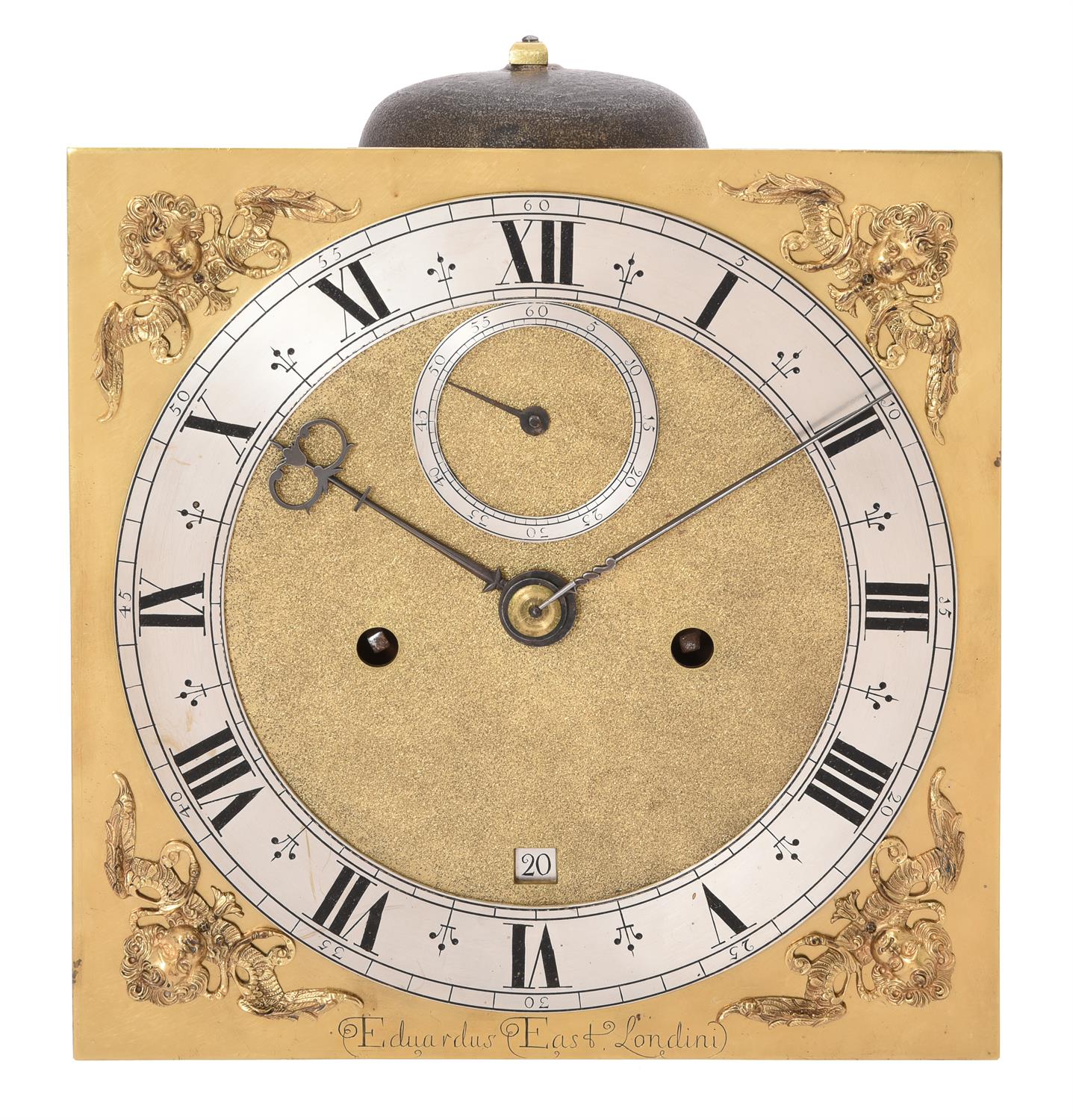



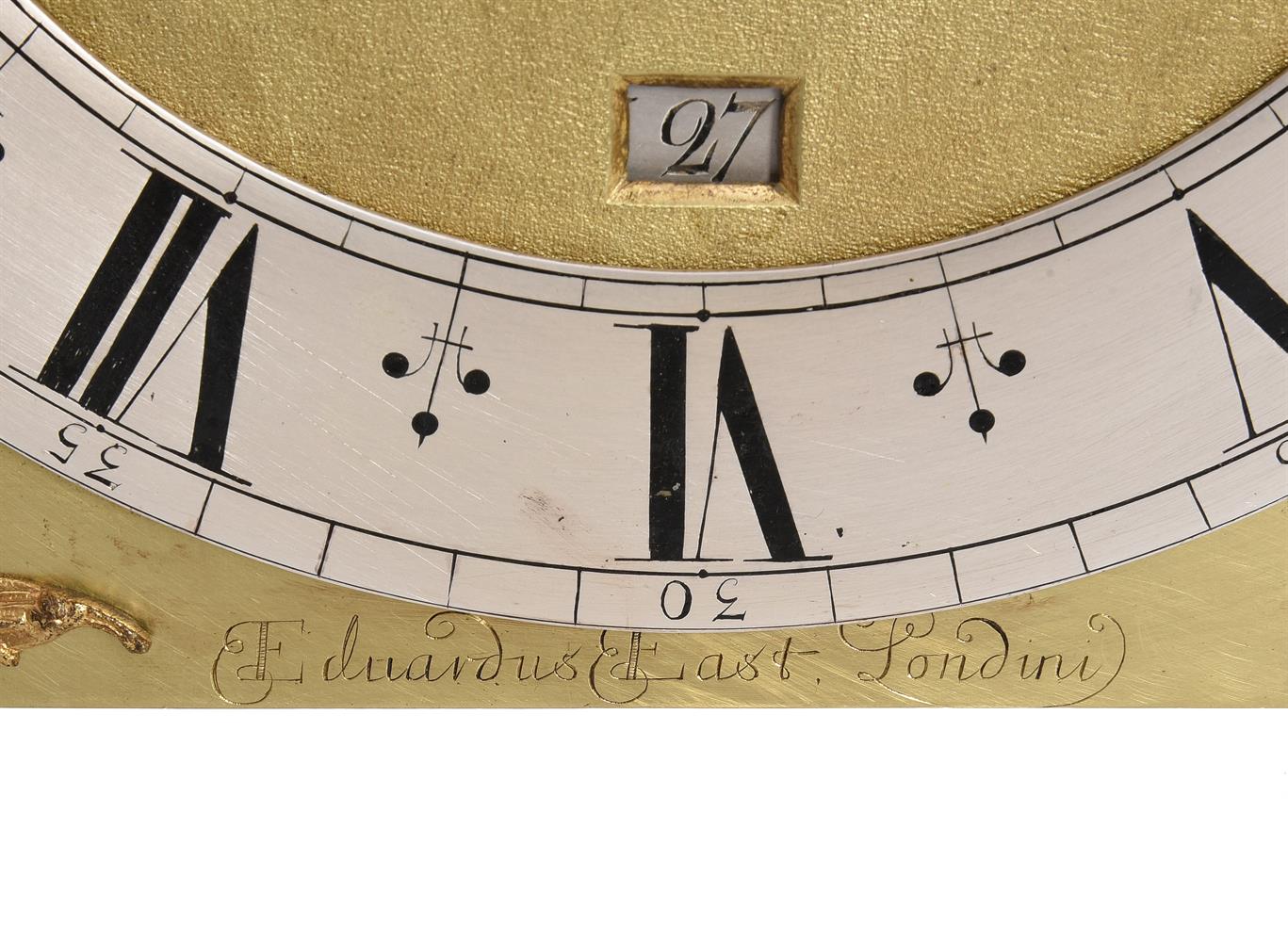

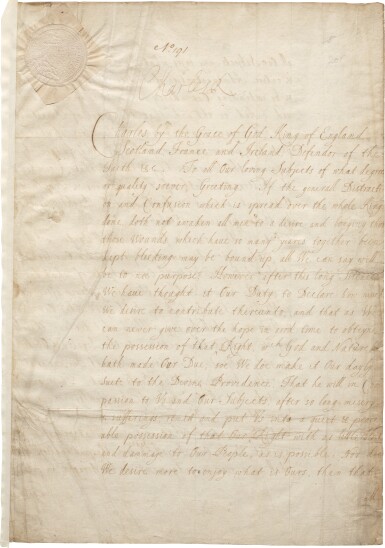




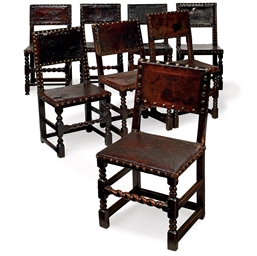


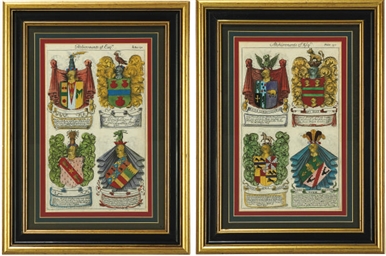
Testen Sie LotSearch und seine Premium-Features 7 Tage - ohne Kosten!
Lassen Sie sich automatisch über neue Objekte in kommenden Auktionen benachrichtigen.
Suchauftrag anlegen